At the end of 2024, I gave you my recipe for Bakewell pudding. The plan was to follow with my recipe for Bakewell tart. Alas, life, Christmas and then a holiday to New Zealand got in the way.
But I always get around to things eventually and I give it to you today!
The Bakewell tart, despite it being dearly loved by Brits, was originally made as a cheap, dumbed-down version of the rich Derbyshire pudding: the puff pastry swapped for shortcrust, and the buttery almond filling swapped for an almond-flavoured sponge cake.
I write about the histories of the Bakewell pudding and tart in Knead to Know: A History of Baking, so pick up a copy if you want to know more.
I have been using this recipe for years now and it’s a real crowd-pleaser. When the restaurant was open, I served this tart warm with a lemon-flavoured cream and received a big bear hug from a diner: there could have been no better seal of approval in my book! The secret to its success is that I make a frangipane rather than a sponge cake filling, bound together with just a tablespoon of flour.
If you like the blogs and podcast I produce and would to start a £3 monthly subscription, or would like to treat me to virtual coffee or pint: follow this link for more information. Thank you.
Recipe
Makes 1 x 21 cm/8 inch tart
For the sweet shortcrust pastry:
200 g plain flour
100 g salted butter, diced (or half-and-half butter and lard)
50 g caster or icing sugar
1 egg, well beaten
Cold water (see recipe)
For the filling:
100 g salted butter, softened
100 g caster sugar
2 eggs
100g ground almonds
30 g self-raising flour
¼ tsp almond extract
3 or 4 tbs raspberry jam
30 g slivered almonds
First, make the pastry: Place the flour and fat(s) in a mixing bowl and rub the fat in until the mixture resembles fresh breadcrumbs. You can do this by hand using fingertips or with the flat beater of a stand mixer on a slow speed. Make a well in the centre and add most of the egg. If using a stand mixer, slowly mix it in, pouring more egg into any dry patches. If doing by hand, use a butter knife to mix (this prevents overworking of the dough). You should have a cohesive dough that can be brought together with your hand – if it does seem dry, add a tablespoon of cold water.
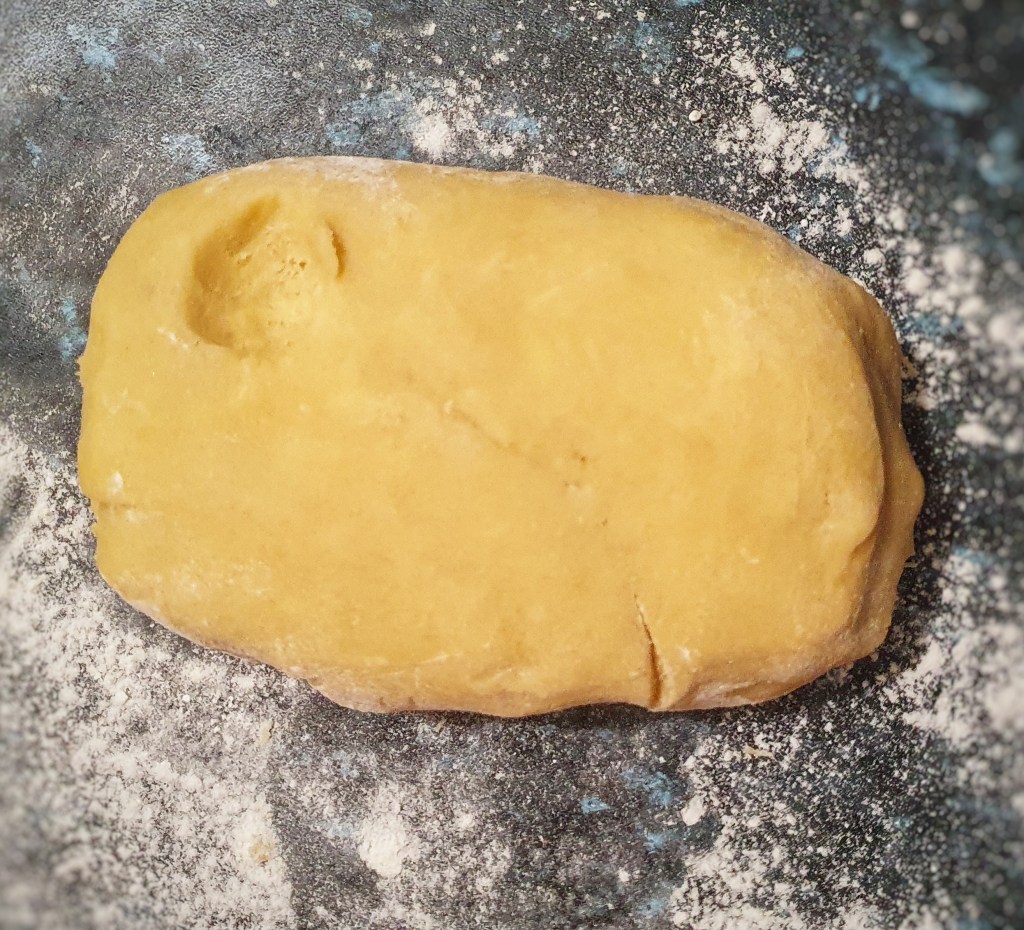
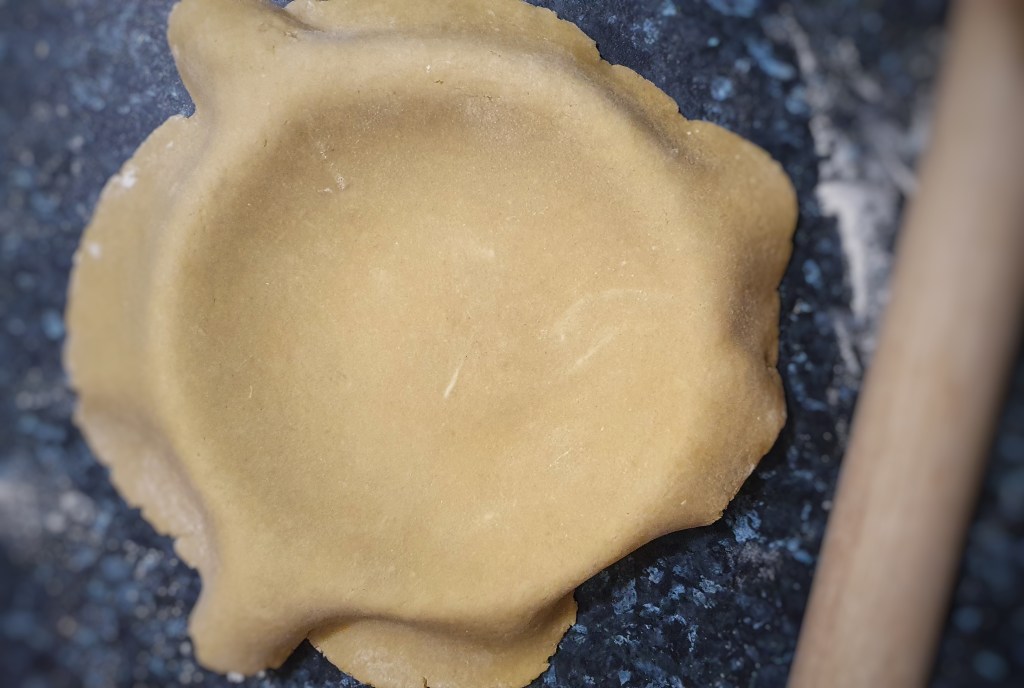
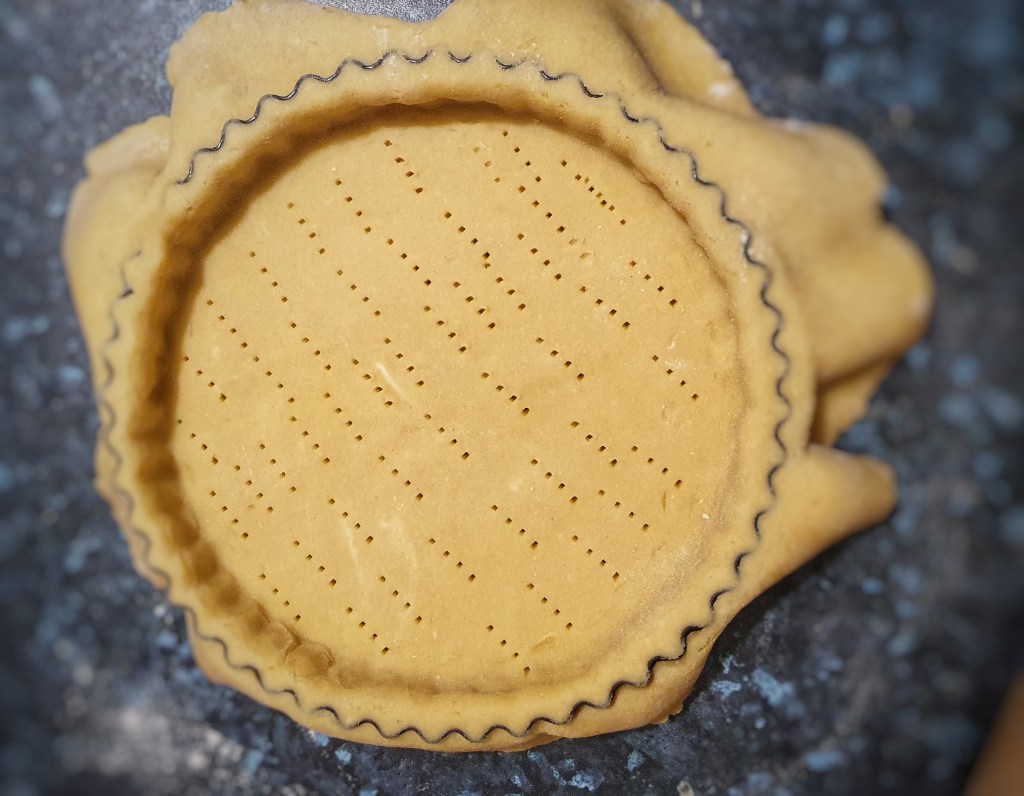
Knead briefly, cover and allow to rest in the fridge for 20 to 30 minutes. Meanwhile, preheat your oven to 180°C and place a baking tray on the centre shelf
On a lightly floured work surface, roll out the pastry to the thickness of a pound coin, and use it to line an 8”/20 cm loose-bottomed tart tin or ring.[1] Prick the base with a fork and place it back in the fridge to firm up.
Now make the filling: using a hand beater or stand mixer, beat together the soft butter, caster sugar, eggs, almonds, flour and extract until smooth.
Take the pastry out of the fridge and spread jam over the bottom leaving a centimetre gap all around the inside edge. Spoon or pipe the mixture first around the edges and then the centre (this stops the jam from rising up the sides of the pastry lining), levelling off with a spatula.
Sprinkle with the slivered almonds and slide the tart onto the hot baking sheet and bake for 40 minutes, turning the heat down to 160°C if the top gets too brown. Cool on a rack, and remove from the tin when just warm.
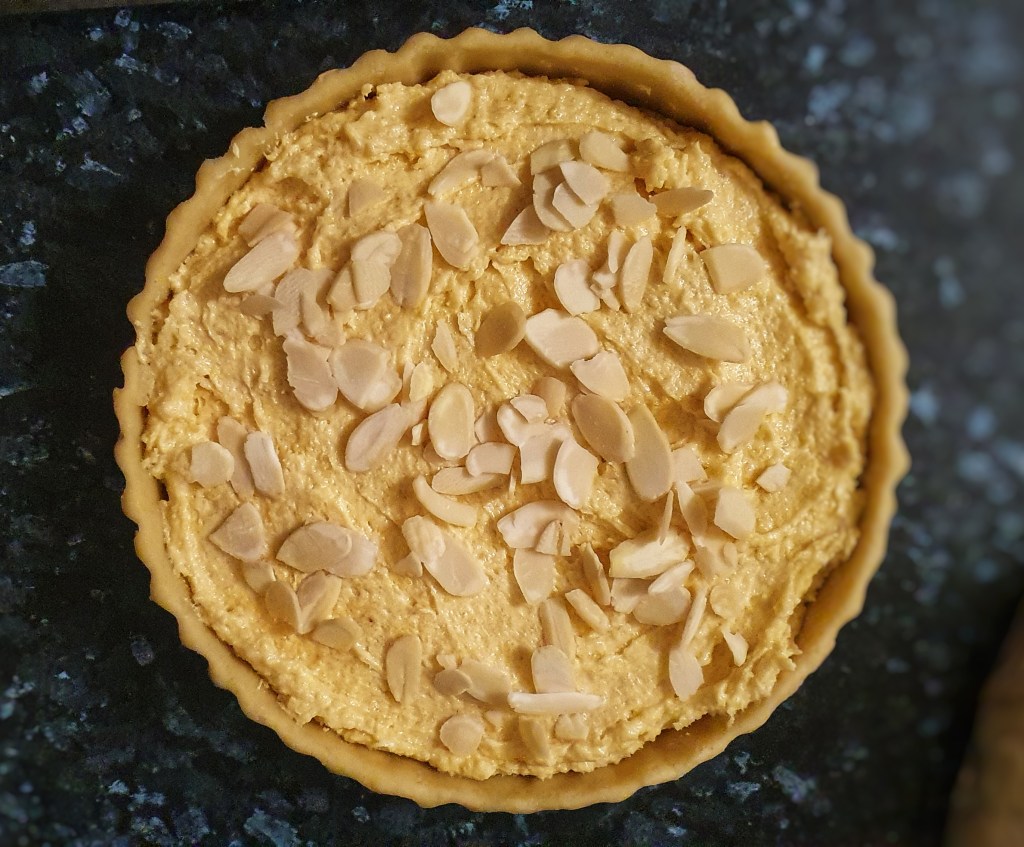
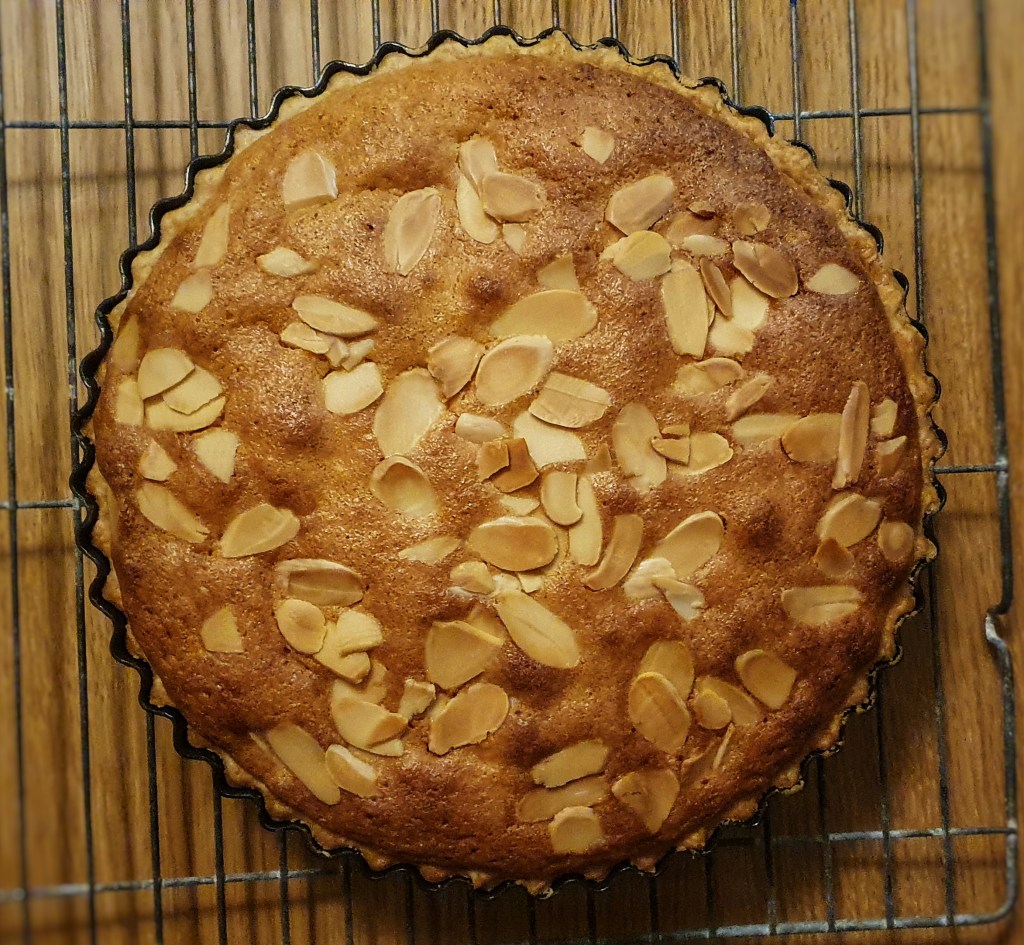
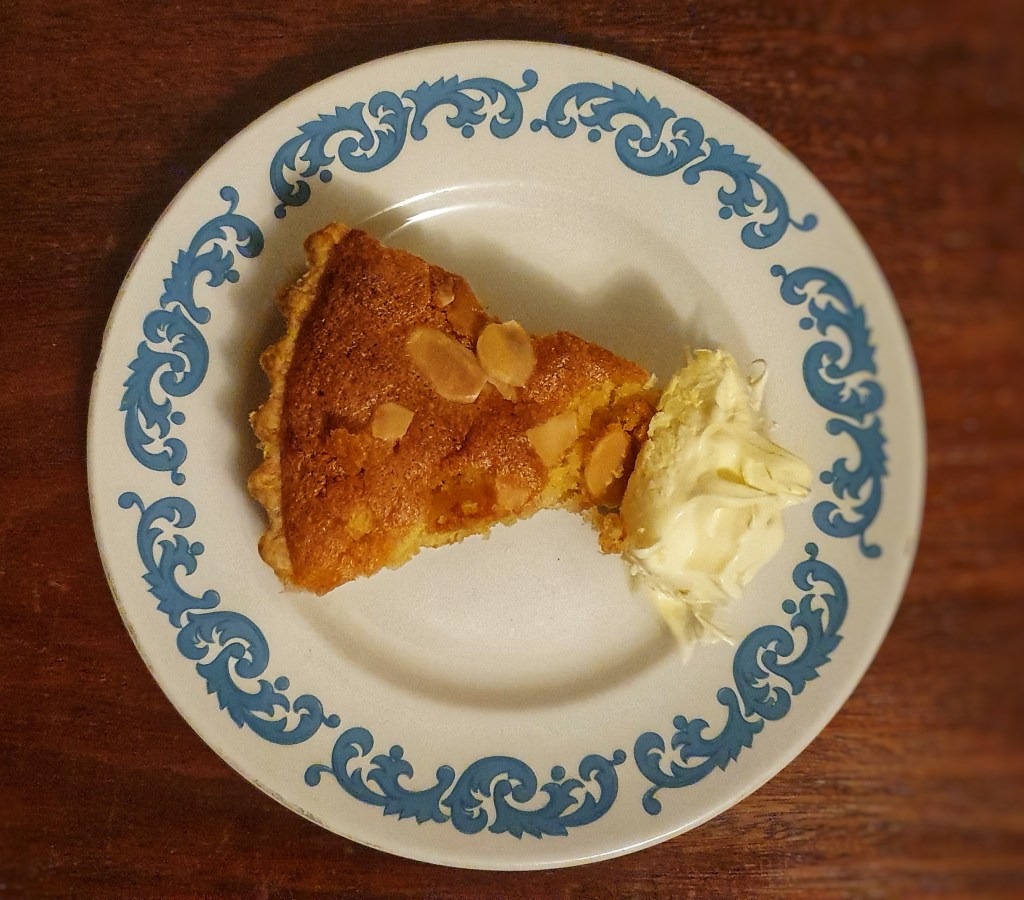
[1] You will find that there is excess pastry – make some nice jam tarts or turnovers.

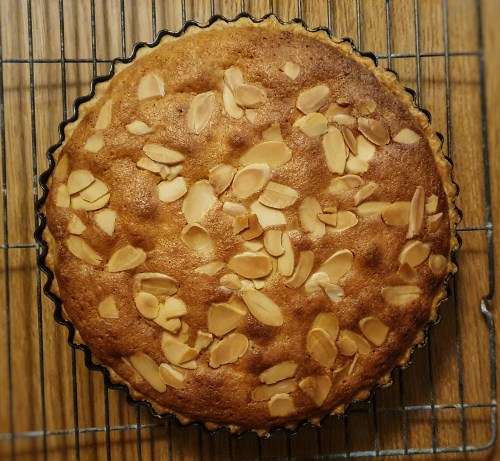
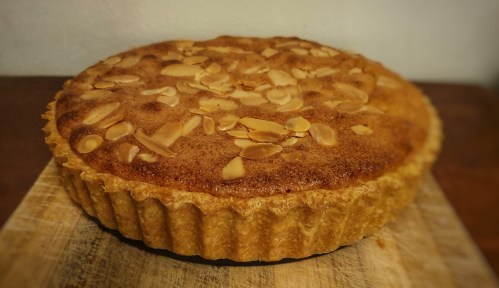
I think I will have to give this one a good go when the weather cools down a bit. I remember making this in cookery class, probably back in 1973 as part of a 3 course meal we were being tested on. I managed to luck in the Principal as my guest of honour since I didn’t have any relatives to come along to the class.
The girl I was paired with was struck dumb by the presence of crusty old Mr McCulloch. It was left to me to carry on the social chit chat with him. Turned out he was quite an interesting chap who had served with Prince Phillip in the RN.
Thanks for the recipe and for bringing back some old memories for me Neil!
LikeLiked by 1 person
Glas to have unlocked some good memories…its often what it’s all about for me. Hope you enjoy your tart when you do get to bake it!
LikeLike
Slivered almonds, Mr Buttery?!? Is that what they’re calling flaked almonds around Manchester these days? 😉
LikeLiked by 1 person
I’ve always called them slivered almonds! I think flaked might be the modern word!
LikeLike
I only know the term from American baking where slivered almonds are more like batons. For what we call flaked almonds, Americans would go with flaked or sliced (slightly different thicknesses, I think).
You’ll be measuring in cups and baking on aloominum sheet pans next!
LikeLike
Hmmmm. Have I been using the wrong word for years!? Maybe i picked it up when I lived in the USA!?
LikeLike
Okay, so it seems I’ve been using the incorrect my hole entire life. Yes, flaked almonds are the usual topping for the tart, but you could get away with slivered almonds! I’ll update this recipe (and every other recipe I’ve ever written that uses flaked almonds) with the right terms!
Thanks for pointing it out, folks!
LikeLike
Interesting! I’ve always thought these were widely known in the UK as flaked almonds. In the US, they are called sliced almonds. What are called slivered almonds in the US, I have no idea what they’re called in the UK. And I don’t know how to describe them, so I would refer you to a photo on my blog that shows them. Don’t want to be spammy, so if you want to delete this comment, I understand. But do look at the photo of my Fat Rascals with slivered almonds for teeth. Delightful Repast: Fat Rascals – A Yorkshire Thing Hope you can tell me what they are called in the UK.
LikeLike
Jean, slivered almonds aren’t really a thing in the UK. You can find them at some online retailers but more often than not they’re “out of stock” due, I think, to lack of demand. Our supermarkets generally have whole, ground (flour), flaked (sliced), and chopped (diced).
LikeLiked by 1 person
I wonder why I’ve always called them slivered almonds then..? Where did I get it from i wonder. All very strange! Maybe I picked it up subliminally in my 2 years in the USA but got the meaning wrong.
LikeLike